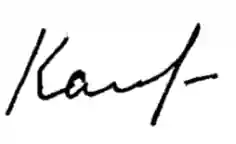Electronic Signatures – What You Need to Know
Over the last few years, especially at the height of the pandemic, electronic signatures have become increasingly popular. In many cases, it was the first time people came across them.
But, the reality is that they’ve been around in one form or another for decades. There are multiple laws in different countries such as the ESIGN Act and eIDAS that deal specifically with electronic signatures.
This short guide will explore what you need to know about electronic signatures before using them.
Are electronic signatures legal?
While we don’t know the laws for every single nation in the world concerning electronic signatures, we’ve put together guides for dozens of countries which you can check out here.
Most Western nations have adopted legislation that allows people to sign with electronic signatures. The electronic signatures created and used to sign documents have the same standing as wet or handwritten signatures.
With that being said, you can’t just paste a signature in a document and call it a day. Certain requirements related to security and verification must be met. That’s why it’s important to use a compliant electronic signature software to sign your documents.
Definition of electronic signatures
An electronic signature can be defined as a symbol, sound, or even process that is associated with an electronic contract/document and represents the intention of someone to sign electronically.
Pay special attention to the word intention. That’s a key point in the definition. The electronic signature can be created and or used in many forms. It can be a simple checkbox, a representation of your signature that has been uploaded, text in the form of signature font, etc.
Types of electronic signatures
Electronic signature is a catchall term that’s used to describe a wide range of signatures. These include but aren’t limited to digital signatures, consent signatures, qualified electronic signatures, advanced electronic signatures, etc. Let’s look at a few of them in turn.
Digital signature
A digital signature is most often used interchangeably with an electronic signature. It’s a type of electronic signature that’s encrypted, authenticated, and later verified using what’s known as public key infrastructure (PKI).
PKI works with a private key and a public key. The private key is only known to the signer and it is what they use to sign documents electronically. The public key is available to anyone who needs it and is used to verify the authenticity of the signature that’s attached to a document.
Before a digital signature can be used, it has additional requirements in line with PKI. For example, you’ll need to go through a certificate authority and a digital certificate, amongst others.
This type of electronic signature offers more protection when it’s imperative that the identity of the signer(s) is verified before an agreement is signed.
Advanced electronic signature (AES)
This type of electronic signature is unique to the European Union and is the second tier of its three-tier system. The first tier is known as the simple electronic signature and it is the most common type of electronic signature in use.
An advanced electronic signature is a type of electronic signature that has met the requirements set out in EU regulations. These requirements include:
- It’s uniquely linked to the signer
- Allows the signer to be identified in association with their signature
- The signer stays in control
- If the data associated with the signature (the document) is tampered with, it shall be detectable due to the AES.
Because of its nature, it’s usually more complex to set up this kind of electronic signature, and it costs more to use it on a regular basis. A result of the added verification requirements is that the AES is more trustworthy and can be officially used in more situations.
Qualified electronic signature
A qualified electronic signature carries the highest standing in the EU and can be used in all situations where a handwritten signature can be used. In fact, it can have an even higher standing than a normal written signature because of the added verification that’s required for it. A qualified electronic signature is a type of electronic signature that has the same requirements as an advanced electronic signature with additional stipulations.
Those stipulations include creating the signature with a qualified signature device and having a certificate for qualified electronic signatures.
How to use an electronic signature to sign a document
It’s relatively straightforward to get a document signed with an electronic signature. The important part is using the right software that handles the requirements in the background.
Here are the steps:
- Upload your document to your chosen electronic signature software
- Determine how you’ll sign the document (alone or with others) and add the contact information of the recipients
- Indicate the contact information of each recipient
- Determine where each recipient will sign
- Decide if you want to set up automated reminder messages and other settings available in your electronic signature software of choice
Electronic signatures are convenient for signing documents quickly and from almost anywhere in the world.
Before signing, it’s important to understand what an electronic signature is and isn’t. It’s also essential that you sign the right types of documents with an electronic signature or upgrade it to a more secure version such as a digital signature or advanced electronic signature. The signature you’re creating on this page is an electronic signature that can be used in most situations so rest easy knowing you’ll be well taken care of.










